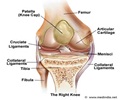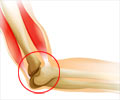Those who poke their elbows out of car windows have a high risk of contracting severe injuries, more specifically sideswipe injuries to the upper arm warns a new study, the results of which can be cited in the latest edition of Medical Journal of Australia.
It is not uncommon to see a driver resting his/her hands on the car window, in a relaxed manner. However experts warn that it can result in devastating injury to the protruding limb/elbow.In an attempt to identify the possible causes and the severity of sideswipe injuries to the upper arm in motor vehicle accidents, researchers at the Royal Perth Hospital, designed a study, in which 11 patients were included.
Seven of the 11 participants had an injury severe enough, resulting in residual impairment, limiting their ability to perform well at work, as a consequence of the accident.
Protruding elbows are particularly at risk of being swiped by a car speeding from the opposite direction. Additionally, loss of control during driving followed by a collision with a wall or post was found to account for elbow injuries. In some cases, the damage may be limited, such as soft tissue damage.
In more severe cases, it can result in open fractures or partial amputation of the limb, necessitating multiple surgical interventions, accompanied by prolonged periods of rehabilitation.
In view of the above situation, the researchers have called for an increased awareness regarding sideswipe injuries among drivers. They should further be encouraged to keep their arms inside the vehicle, to reduce the incidence of elbow injuries that can be prevented.
Advertisement
The authors have further highlighted the need for a stringent legislation governing the interior design of cars, increased road traffic surveillance systems in the form of cameras and road sensors, provision of barriers to separate opposing traffic flow and centerline rumble-strips, to be incorporated in rural road construction.
Advertisement








